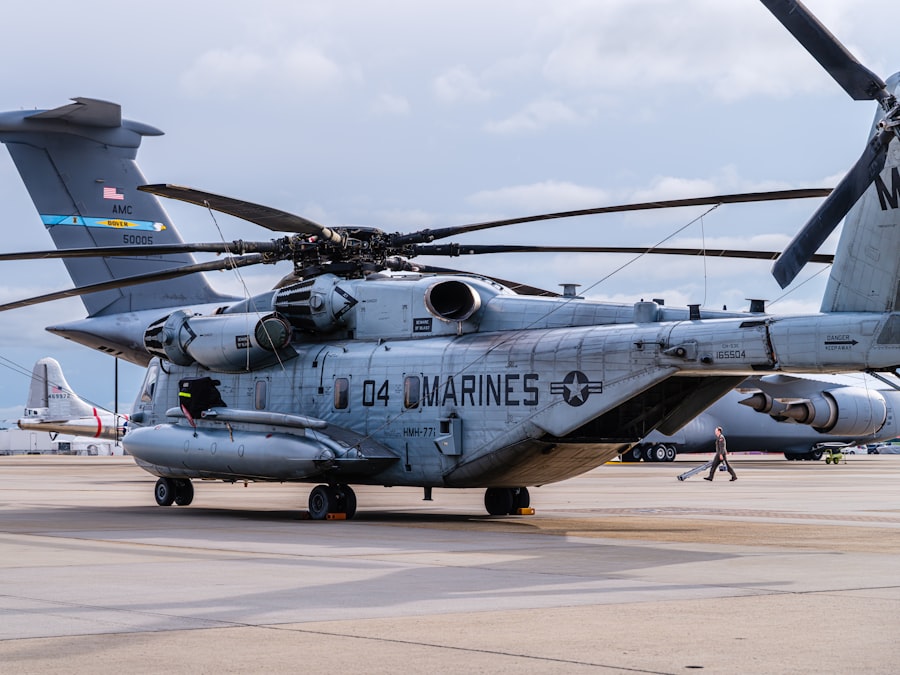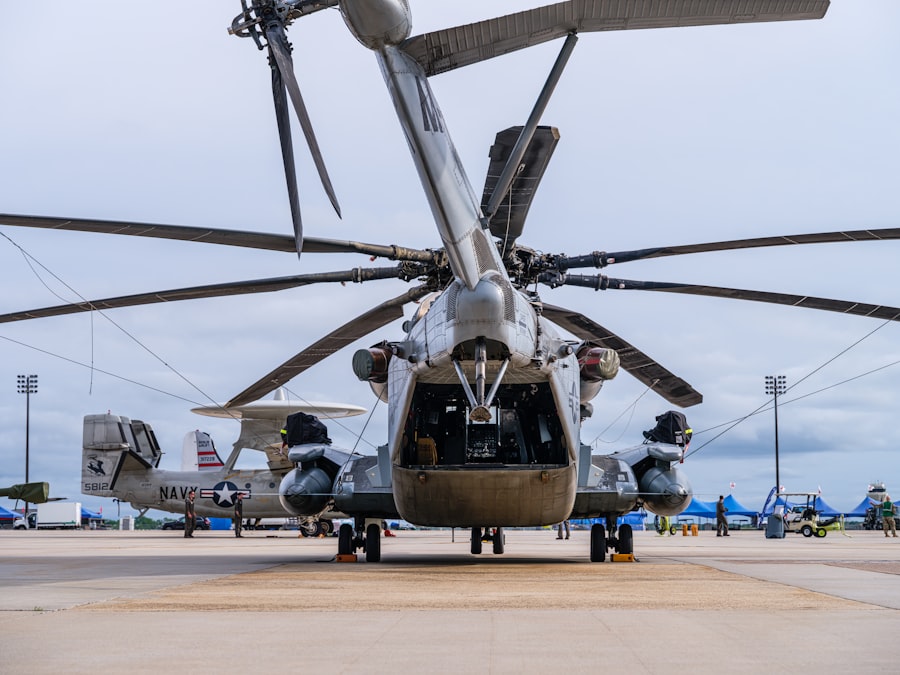Igor Sikorsky, a name synonymous with the evolution of vertical flight, was a pioneering aviator and engineer whose contributions to aviation have left an indelible mark on the industry. Born in Kyiv, Ukraine, in 1889, Sikorsky’s fascination with flight began at an early age, influenced by the burgeoning field of aeronautics and the works of early aviation pioneers. His journey into aviation was not merely a career choice; it was a lifelong passion that would lead him to become one of the most influential figures in the history of flight.
Sikorsky’s vision extended beyond conventional aircraft; he sought to create machines that could hover, take off, and land vertically, a concept that would revolutionize air travel. Sikorsky’s impact on aviation is profound and multifaceted. He is best known for developing the first successful helicopter, but his contributions extend to fixed-wing aircraft as well.
His innovative spirit and relentless pursuit of engineering excellence laid the groundwork for modern aviation. Sikorsky’s work not only advanced the technology of flight but also transformed how we think about transportation, emergency response, and military operations. His legacy is evident in the continued evolution of rotorcraft and the ongoing advancements in aerospace engineering that draw inspiration from his pioneering designs.
Key Takeaways
- Igor Sikorsky was a pioneering figure in aviation, known for his impact on helicopter technology and design.
- He developed the first successful helicopter, revolutionizing vertical flight and paving the way for future advancements in aviation.
- Sikorsky’s influence extended to both military and civilian aviation, with his designs being used in various applications.
- His legacy in vertical flight and aerospace engineering continues to inspire innovation in the field of aviation.
- The Sikorsky Aircraft Corporation has played a significant role in shaping the future of aviation, with a focus on safety and efficiency.
The Development of the First Successful Helicopter
The journey to creating the first successful helicopter was fraught with challenges and setbacks, yet Sikorsky’s determination never wavered. In 1939, after years of experimentation with various rotorcraft designs, he achieved a significant breakthrough with the Vought-Sikorsky VS-300. This prototype featured a single main rotor and a smaller tail rotor, a configuration that would become standard in helicopter design.
The VS-300’s first flight marked a pivotal moment in aviation history, demonstrating the feasibility of vertical flight and setting the stage for future developments in helicopter technology. The VS-300 was not merely a technical achievement; it represented a paradigm shift in how aircraft could operate. Unlike fixed-wing airplanes that required long runways for takeoff and landing, Sikorsky’s helicopter could ascend and descend vertically, making it ideal for urban environments and remote locations.
This capability opened new avenues for transportation, search and rescue operations, and military applications. The success of the VS-300 laid the foundation for subsequent models, including the iconic Sikorsky R-4, which became the first mass-produced helicopter in history. Sikorsky’s relentless pursuit of innovation and his ability to overcome engineering challenges were instrumental in bringing vertical flight into the mainstream.
Sikorsky’s Influence on Military and Civilian Aviation

Sikorsky’s influence on both military and civilian aviation is profound and far-reaching. During World War II, helicopters began to find their place in military operations, with Sikorsky’s designs playing a crucial role. The R-4 helicopter was utilized for various missions, including reconnaissance, medical evacuation, and transport of personnel.
Its ability to operate in challenging environments made it an invaluable asset to military forces. Sikorsky’s innovations not only enhanced operational capabilities but also saved countless lives by providing rapid medical assistance to wounded soldiers. In civilian aviation, Sikorsky’s helicopters revolutionized air travel and transportation.
The S-55 and S-58 models became staples in commercial aviation, serving as air ambulances, news helicopters, and utility aircraft. These helicopters demonstrated versatility in various roles, from transporting passengers to conducting aerial surveys. Sikorsky’s designs emphasized safety and reliability, which helped build public trust in helicopter travel.
The integration of helicopters into civilian life transformed industries such as law enforcement, firefighting, and tourism, showcasing the adaptability of Sikorsky’s innovations.
Advancements in Helicopter Technology and Design
| Advancements | Technology and Design |
|---|---|
| 1 | Improved aerodynamics for better efficiency |
| 2 | Enhanced safety features such as crash-resistant fuel systems |
| 3 | Integration of advanced avionics for better navigation and control |
| 4 | Development of composite materials for lighter and stronger structures |
| 5 | Introduction of fly-by-wire systems for improved handling and stability |
Sikorsky’s commitment to advancing helicopter technology did not stop with his initial designs; he continually sought to improve performance, safety, and efficiency. One of his significant contributions was the development of the rigid rotor system, which allowed for greater maneuverability and stability during flight. This innovation addressed some of the limitations associated with earlier rotor designs, enabling helicopters to perform complex maneuvers while maintaining control.
Moreover, Sikorsky’s emphasis on aerodynamics led to advancements in rotor blade design. The introduction of composite materials improved strength while reducing weight, enhancing overall performance. These advancements paved the way for helicopters capable of higher speeds and greater payload capacities.
Sikorsky’s focus on research and development fostered an environment where innovation thrived, leading to breakthroughs that would shape the future of vertical flight. His legacy is evident in modern helicopters that incorporate advanced avionics, enhanced safety features, and improved fuel efficiency.
Sikorsky’s Legacy in Vertical Flight and Aerospace Engineering
Igor Sikorsky’s legacy extends far beyond his lifetime; it continues to influence generations of engineers and aviators. His pioneering work laid the groundwork for vertical flight as we know it today. The principles he established regarding rotorcraft design remain integral to modern aerospace engineering curricula worldwide.
Sikorsky’s emphasis on safety, reliability, and performance has become a benchmark for helicopter manufacturers globally. The impact of Sikorsky’s innovations can be seen in various sectors beyond aviation. His designs have inspired advancements in unmanned aerial vehicles (UAVs) and other aerospace technologies.
The principles of vertical flight have been adapted for use in drones and other emerging technologies that require similar capabilities. Sikorsky’s vision for flight has transcended traditional boundaries, influencing not only how we fly but also how we think about transportation in an increasingly complex world.
The Impact of Sikorsky Aircraft Corporation on Aviation

The establishment of Sikorsky Aircraft Corporation in 1925 marked a significant milestone in aviation history. Under Sikorsky’s leadership, the company became synonymous with innovation and excellence in helicopter design and manufacturing. The corporation played a pivotal role in advancing rotorcraft technology while also contributing to fixed-wing aircraft development.
Throughout its history, Sikorsky Aircraft has produced numerous iconic helicopters that have become staples in both military and civilian aviation. The company’s commitment to research and development has led to groundbreaking advancements that have shaped the industry. For instance, the introduction of the CH-53 Sea Stallion revolutionized heavy-lift capabilities for military operations, while the S-76 series became a benchmark for executive transport helicopters.
Sikorsky Aircraft Corporation has consistently pushed the boundaries of what is possible in aviation, fostering an environment where innovation thrives. Its contributions have not only enhanced operational capabilities but have also set new standards for safety and efficiency across the industry.
Sikorsky’s Contributions to Aviation Safety and Efficiency
Safety has always been a paramount concern in aviation, and Igor Sikorsky recognized this from the outset of his career. His designs incorporated numerous safety features that were groundbreaking at the time. For example, the use of dual hydraulic systems in helicopters significantly improved control during emergencies, allowing pilots to maintain command even if one system failed.
This focus on redundancy has become a standard practice in modern helicopter design. Efficiency was another area where Sikorsky made significant contributions. His emphasis on aerodynamics led to designs that minimized drag while maximizing lift, resulting in improved fuel efficiency—a critical factor for both military operations and commercial applications.
The integration of advanced materials further enhanced performance while reducing operational costs. Sikorsky’s commitment to safety and efficiency has had lasting implications for the industry, influencing regulatory standards and best practices that continue to shape aviation today.
The Future of Sikorsky’s Legacy in Aviation Innovation
As we look toward the future of aviation innovation, Igor Sikorsky’s legacy remains a guiding force within the industry. The principles he championed—safety, reliability, performance—continue to resonate as engineers tackle new challenges posed by emerging technologies such as electric vertical takeoff and landing (eVTOL) aircraft and autonomous flight systems. Sikorsky’s pioneering spirit serves as an inspiration for current and future generations of aerospace engineers who are pushing the boundaries of what is possible.
The ongoing evolution of rotorcraft technology reflects Sikorsky’s vision for vertical flight as an integral part of modern transportation systems. Companies are now exploring hybrid-electric propulsion systems that promise to reduce emissions while maintaining performance standards established by Sikorsky’s early designs. As urban air mobility becomes a reality with concepts like air taxis gaining traction, Sikorsky’s foundational work will undoubtedly influence how these new aircraft are developed and integrated into existing airspace systems.
In conclusion, Igor Sikorsky’s contributions to aviation are monumental and enduring. His innovative designs have transformed both military and civilian aviation while setting standards for safety and efficiency that continue to guide the industry today. As we advance into an era defined by rapid technological change, Sikorsky’s legacy will undoubtedly inspire future innovations that redefine how we think about flight.


